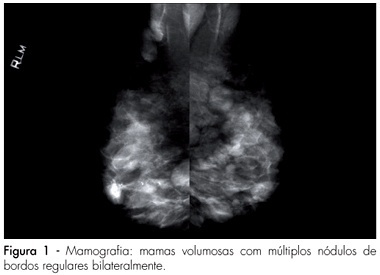Summary
Revista Brasileira de Ginecologia e Obstetrícia. 2016;38(7):365-367
Mature cystic teratomas, or dermoid tumors, are the most common benign ovarian neoplasms in young women. Malignant transformation is rare, and occurs in less than 2% of the cases. The heterogeneous histological composition of these tumors may be responsible for the occasional elevation of various tumor markers, such as Ca19-9 and Ca125. We describe one case of mature cystic teratoma in a 50-year old woman with the second highest level of Ca19-9 (8922.76 UI/mL) described in the literature. We concluded that abnormal levels of Ca19-9 are not necessarily associated with ovarian malignancy, and may lead to unnecessary medical intervention and patient anxiety. Therefore, the clinical features, imaging studies and antigen testing should be interpreted carefully, and should not limit the surgical approach.
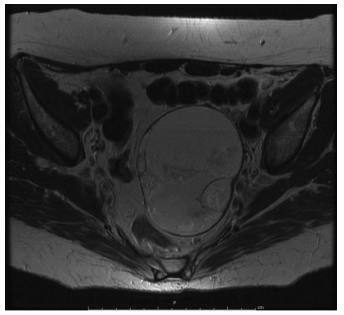
Summary
Revista Brasileira de Ginecologia e Obstetrícia. 2006;28(6):365-372
DOI 10.1590/S0100-72032006000600008
As therapeutic approaches for oncologic diseases are being improved and an increase in the survival rates are being achieved, long-term complications of these therapies, initially infrequent, assume these days an important place when considering life quality. Among the long term repercussions appears the premature ovarian failure. According to the recommendations of the American Society of Clinical Oncology recently published, the only procedures available nowadays considered to be effective for female fertility preservation are: embryo cryopreservation, conservative gynecological surgery and oophoropexy in cases of local radiotherapy. All the other proposed techniques, surch as: ovarian suppression and oocyte and ovarian tissue cryopreservation, although present promising results, are still considered as experimental options. The best choice for fertility preservation in each specific case depends on patient's age, type of treatment, existence of a partner, time available until chemo- or radiotherapy beginning, and the ovarian metastatic potential of the tumor. In the present manuscript, the available and experimental techniques for fertility preservation are revised and discussed.
Summary
Revista Brasileira de Ginecologia e Obstetrícia. 2003;25(5):365-370
DOI 10.1590/S0100-72032003000500010
PURPOSE: to assess the performance of hybrid capture II (HCII) HPV viral load in predicting the grade of cervical lesions. METHODS: between August 2000 to November 2002, 309 women admitted due to an abnormal Pap smear result were recruited. Histological disease confirmation was done in all women and cervical intraepithelial neoplasia (CIN) grade 2 or above was considered as severe disease. HCII was done for high-risk HPV types and viral load was estimated in relative light units (RLU). Receiver operating characteristics analysis was used to test the performance of HCII. RESULTS: histological findings included 140 (45.3%) cervicitis or CIN 1 and 199 (54.7%) CIN 2/3, in situ adenocarcinoma or invasive cancer. The best cutoff for HCII in detecting severe disease was 35 RLU, showing a sensitivity of 69% and a specificity of 70%. Association of high-grade cervical lesions at Pap smear and HCII at 35 RLU showed a positive predictive value of 88.2% in diagnosis of CIN 2 or above. On the other hand, 95.7% of the women with low grade lesion at cytology and HCII below 1 RLU presented no severe histological disease. CONCLUSIONS: the best performance of HCII in diagnosing CIN 2 or above was found at 35 RLU. Association of cytology and HCII in different settings provided very high positive and negative predictive values.
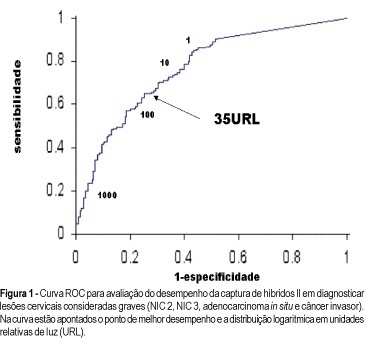
Summary
Revista Brasileira de Ginecologia e Obstetrícia. 2020;42(6):365-368
Cellular angiofibroma (CA)is a rare benign mesenchymal tumor. In women, it occurs mainly in the vulvovaginal region, with vulvar location in 70% of the cases. Its clinical presentation is nonspecific and similar to several other vulvar tumors of different cellular origins. Thus, its histological and immunohistochemical features allow distinction fromother tumors. Cellular angiofibromas have good prognosis, despite some risk of relapse. The authors present the case of a 49-year-old woman with a bulky right vulvar lesion, for which the preoperative diagnosis was a Bartholin cyst, but the histological and immunohistochemical evaluation yielded a CA.
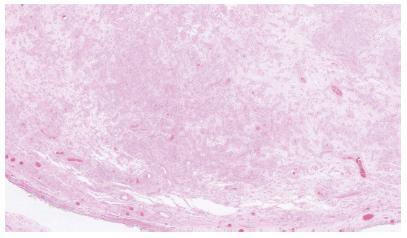
Summary
Revista Brasileira de Ginecologia e Obstetrícia. 2001;23(6):365-370
DOI 10.1590/S0100-72032001000600004
Purpose: to compare ovarian adhesion according to different types of ovarian cortex closure. Methods: fifteen rabbits were randomly assigned to 3 groups according to the type of ovarian cortex closure, consisting of bipolar diathermy, 5-0 polyglactin 910 and 5-0 plain catgut. After 2 weeks the animals were sacrificed and the adhesion scores were evaluated in the right ovary using the Diamond classification. The left ovary, not incised, was used as control. Statistical analyses were done using analysis of variance (ANOVA), Scheffé test and Student's t test. Results:the mean adhesion scores for the bipolar, polyglactin and plain catgut groups were 0.7, 1.5 and 2.0, respectively. The analysis of variance detected a significant difference (p=0.02) between the three groups. Using Scheffé test for the two by two comparison of the groups, a significant difference was found between the bipolar and the plain catgut groups. Comparing the group in which sutures were used (independent of the material employed) with the bipolar group, a statistically significant difference was observed (1.8 and 0.7, respectively, p=0.01). Conclusions: the results obtained in this study are in accordance with the literature data, showing that second intention closure is more advantageous, concerning adhesion formation, than closure using sutures.
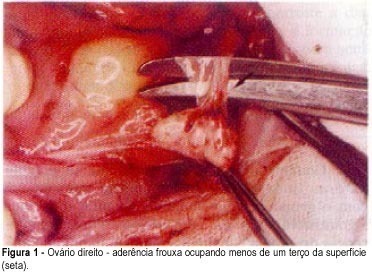
Summary
Revista Brasileira de Ginecologia e Obstetrícia. 2015;37(8):366-373
DOI 10.1590/SO100-720320150005420
To describe associations between pregnancy rates in adolescence and socioeconomic and social responsibility indicators in the municipalities of the State of Minas Gerais, Southeast of Brazil, in the year of 2010.
Ecological study using data from the Brazilian Live Birth Information System (SINASC). The percentage of live births to adolescent mothers (LBAM) for each municipality was calculated based on the quotient between number of born alive infants of mothers aged 10-19 years old and total number of live births in the year of 2010. Fully Bayesian models were used to obtain the percentages of LBAM adjusted for spatial effects and to assess possible associations with socioeconomic and social responsibility indicators.
The crude percentage of LBAM for the total number of live births in the municipalities of Minas Gerais in 2010 ranged from 0 to 46.4%, with median percentage being 19.6% and the first and third quartiles being 15.6 and 23.1%, respectively. This study has demonstrated a close relationship between adolescent pregnancy and socioeconomic indicators. LBAM percentages were found to be higher in municipalities with low population density, low human development index and other low development indicators.
The strong relationship between LBAM percentages and socioeconomic indicators suggests that adolescent pregnancy is more a social than a biological problem. Therefore, programs and actions should go beyond sexual education and information on preventive health methods.
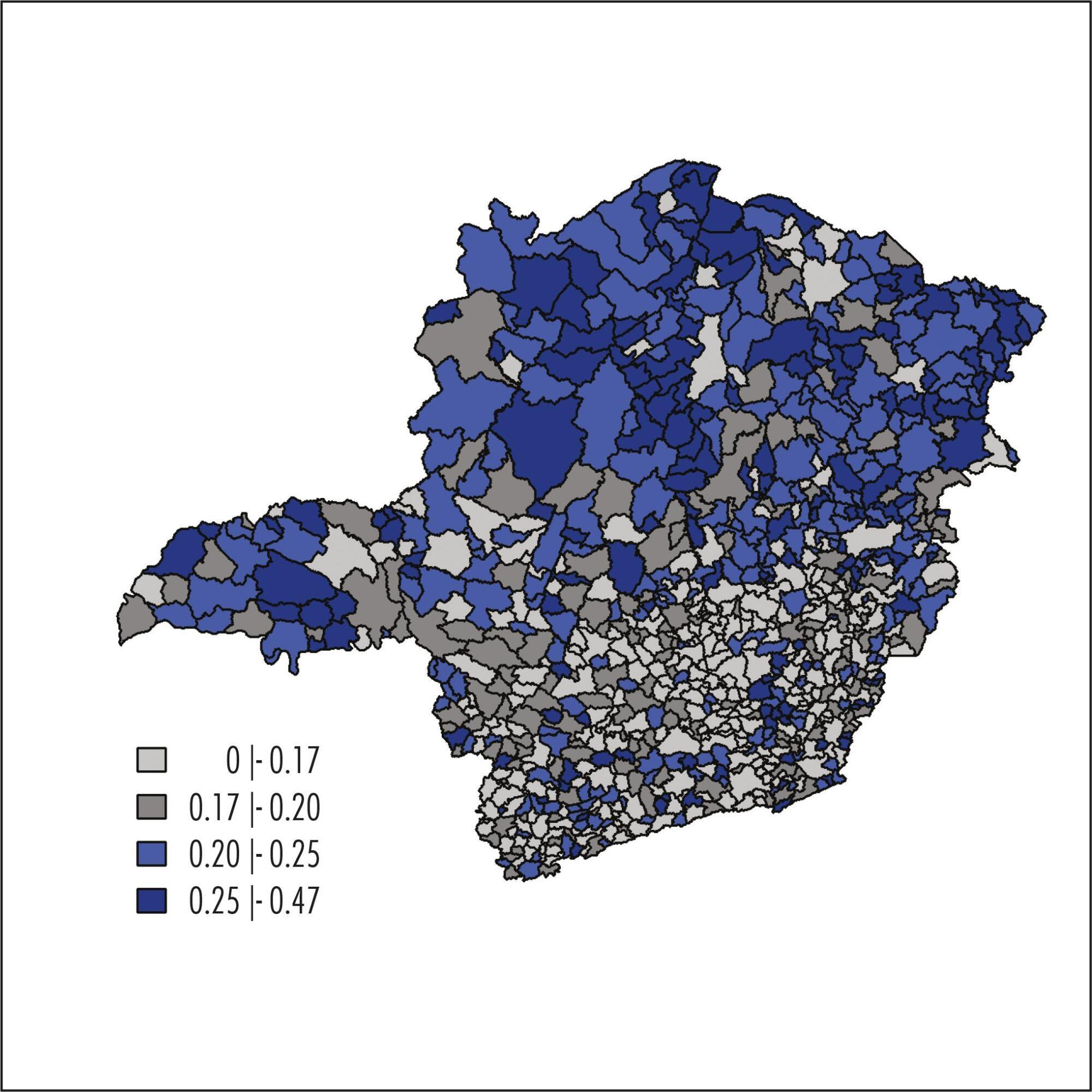
Summary
Revista Brasileira de Ginecologia e Obstetrícia. 2008;30(7):366-371
DOI 10.1590/S0100-72032008000700008
The application and development of obstetric Dopplervelocimetry provide a basis for the investigation of placental insufficiency and demonstrate the dynamic behavior of fetal circulation during hypoxia. In clinical practice, assessing hemodynamics in three vascular regions involved in pregnancy, namely the uterine, umbilical and middle cerebral arteries, has become routine. Roughly, the cerebral artery expresses the balance between uterine artery oxygen supply and umbilical artery oxygen uptake. Currently, when such balance is unfavorable, the fetal cardiac reserve is investigated by assessing the venous duct. However, determining and interpreting vascular resistance indexes is not an easy task. The starting point is to know the physiopathology of placental insufficiency and fetal circulatory adaptation through which Doppler confirmed its role in the assessment of fetal well-being.
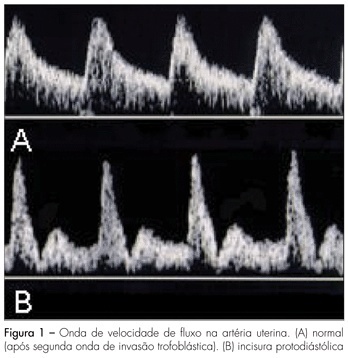
Summary
Revista Brasileira de Ginecologia e Obstetrícia. 2007;29(7):366-369
DOI 10.1590/S0100-72032007000700007
Fibroadenoma is the most frequent benign neoplasia in the female breast and it is considered a mixed tumor, constituted by variable amounts of connective and epithelial tissue. Cyclosporine A seems to be related with the development of mamary fibroadenomas in patients who underwent kidney transplantation in reproductive age. We reported the case in which the patient, in therapeutic use of cyclosporine A, after kidney transplantation, presented several bilateral lumps. The imaging and palpable findings suggested fibroadenoma, confirmed after biopsy.
